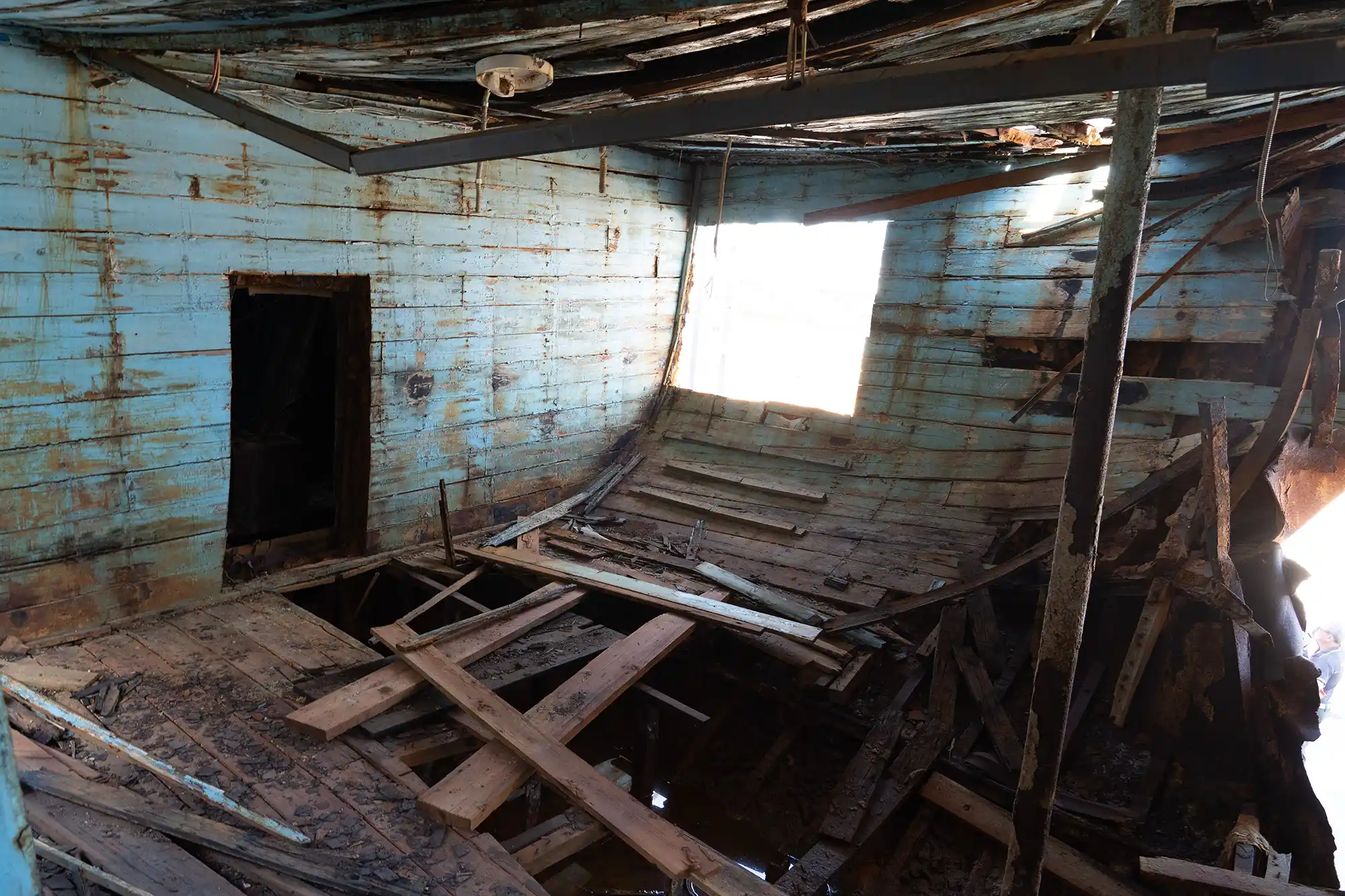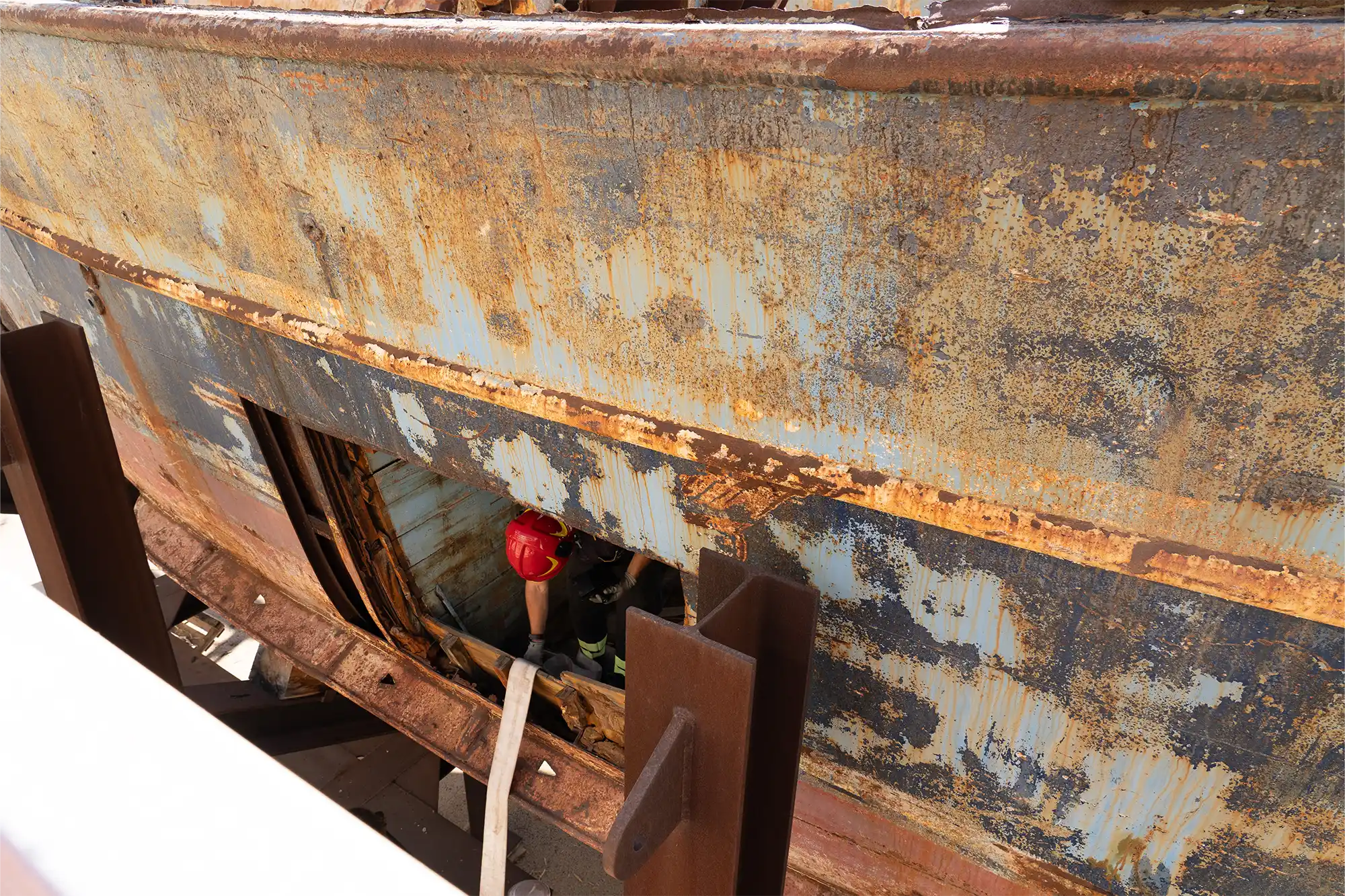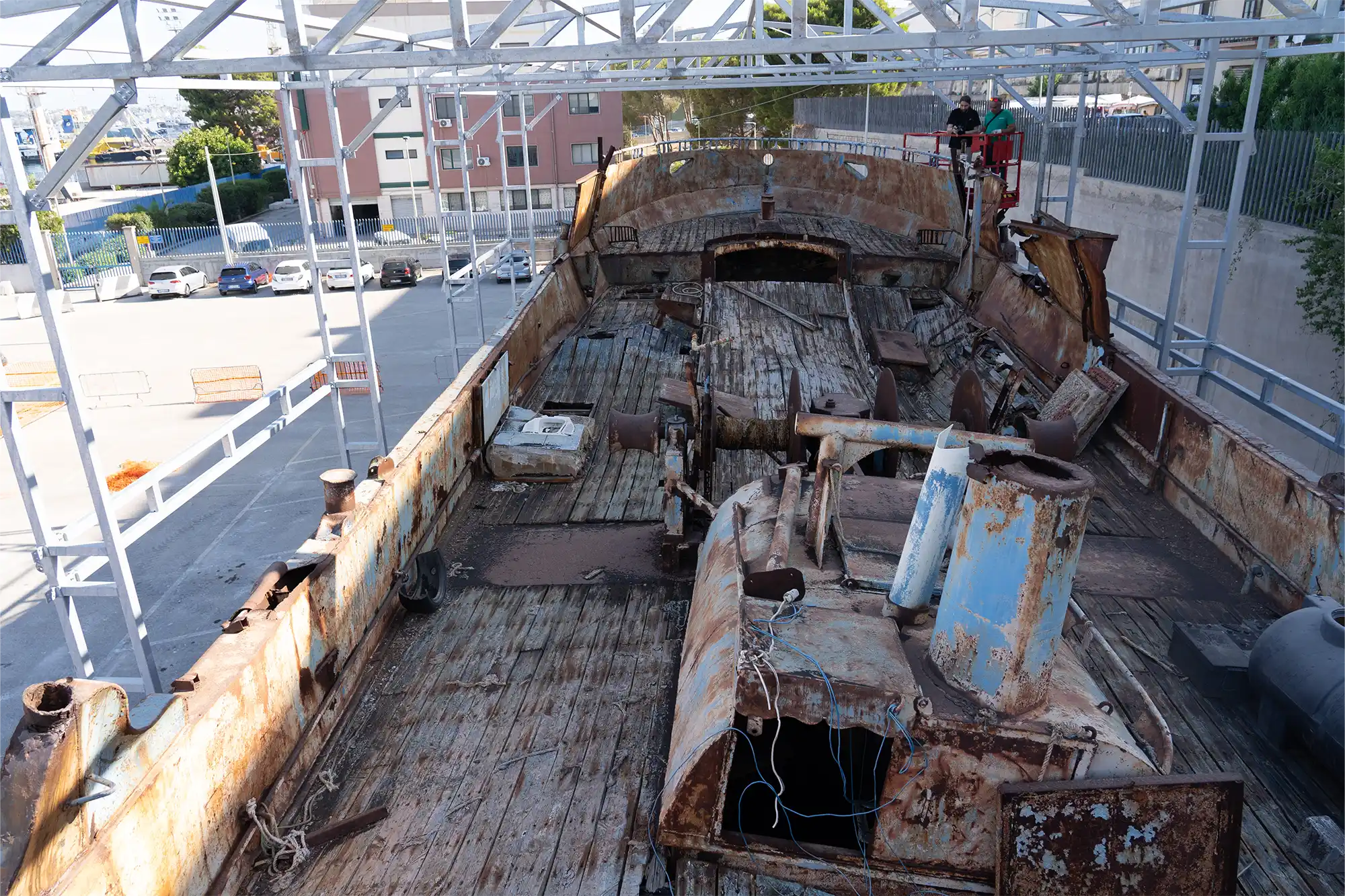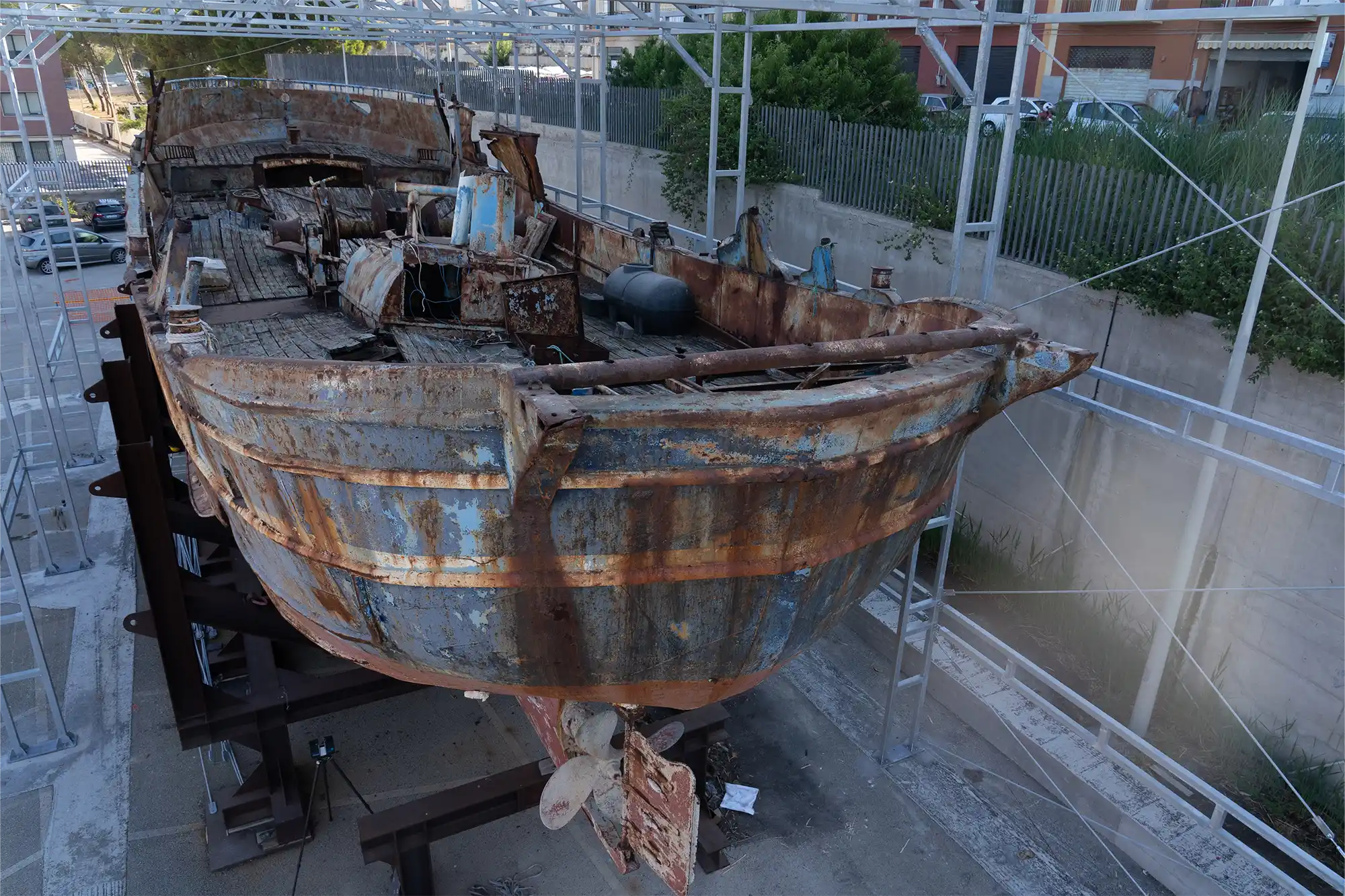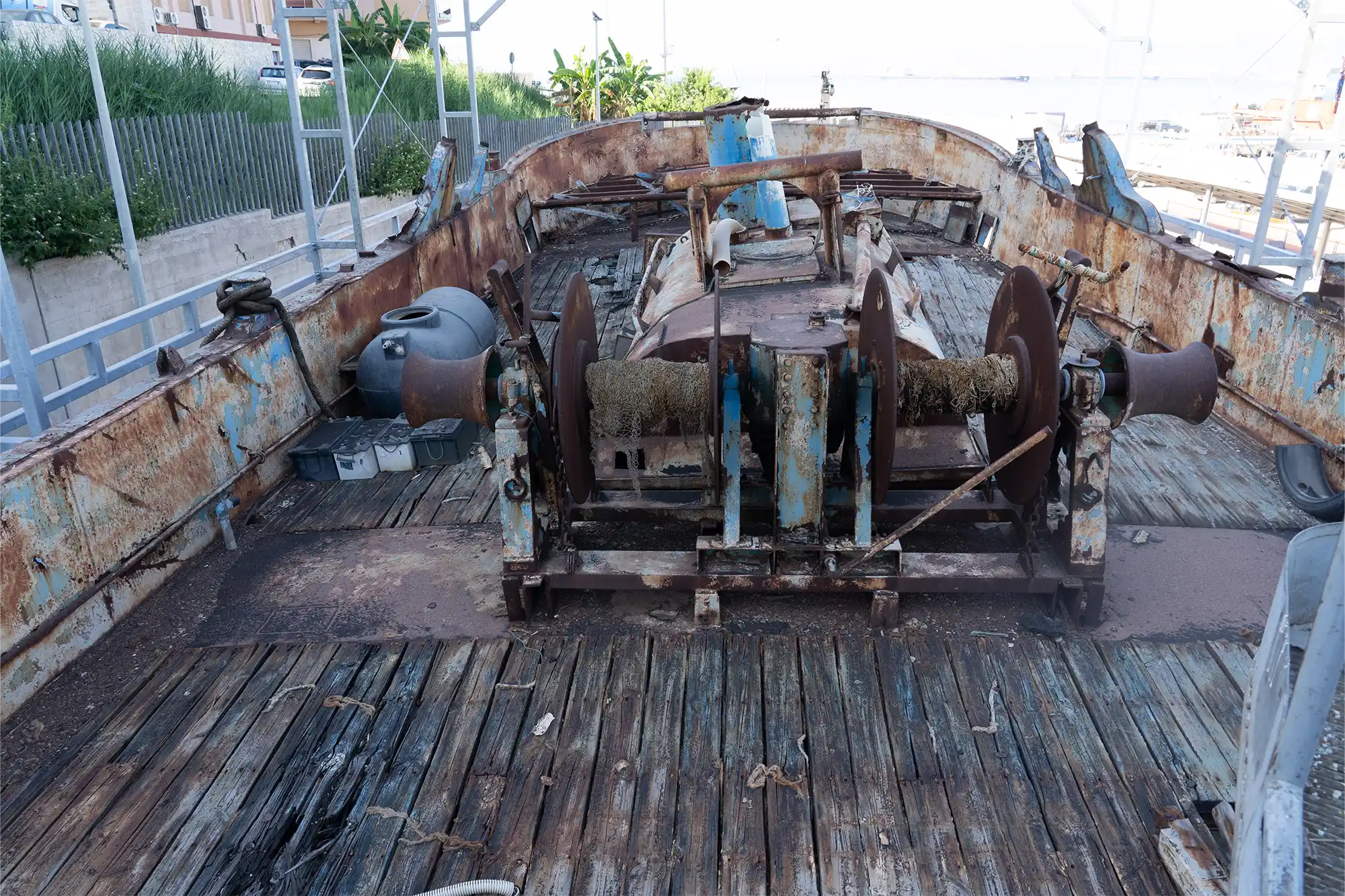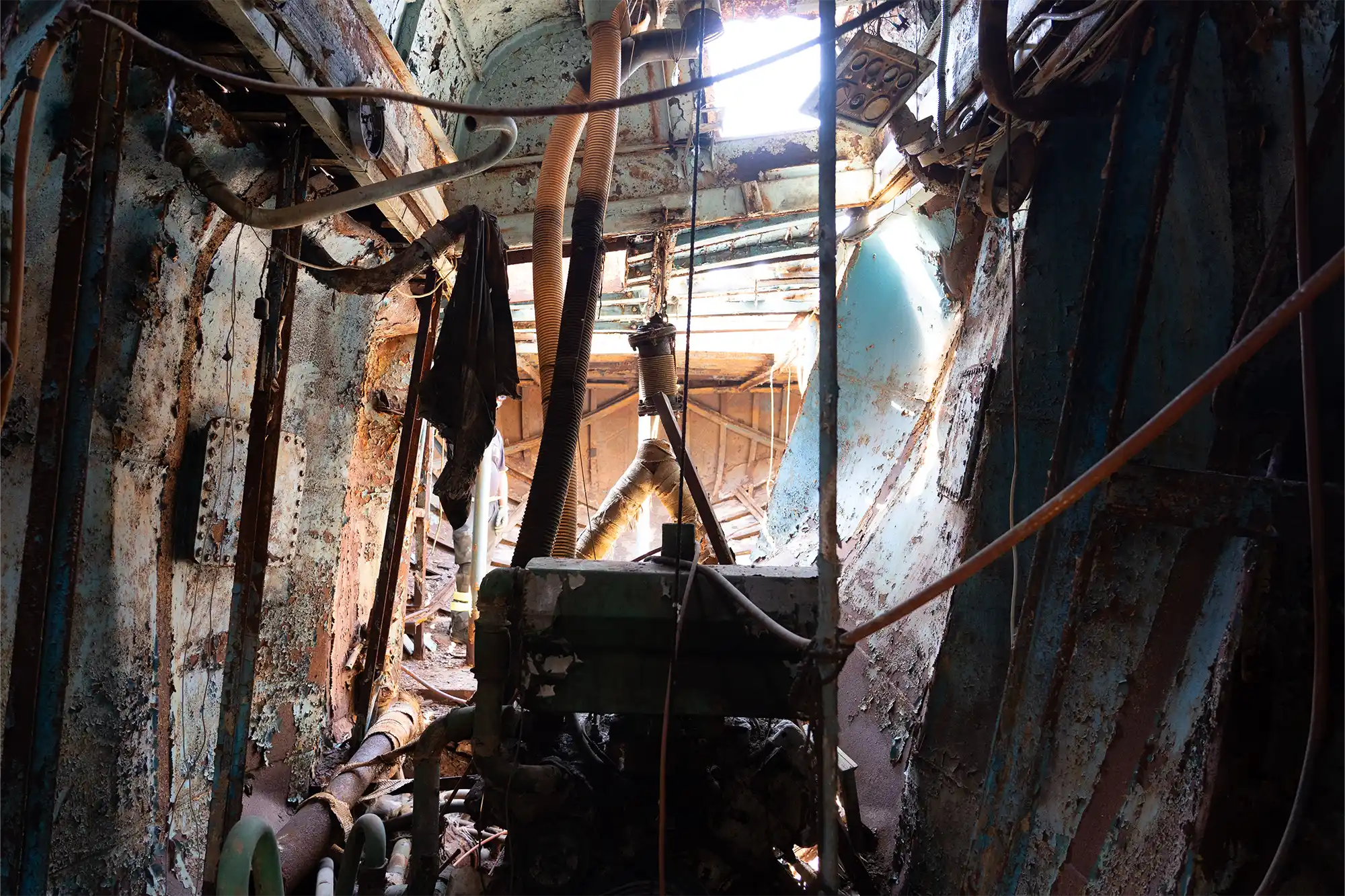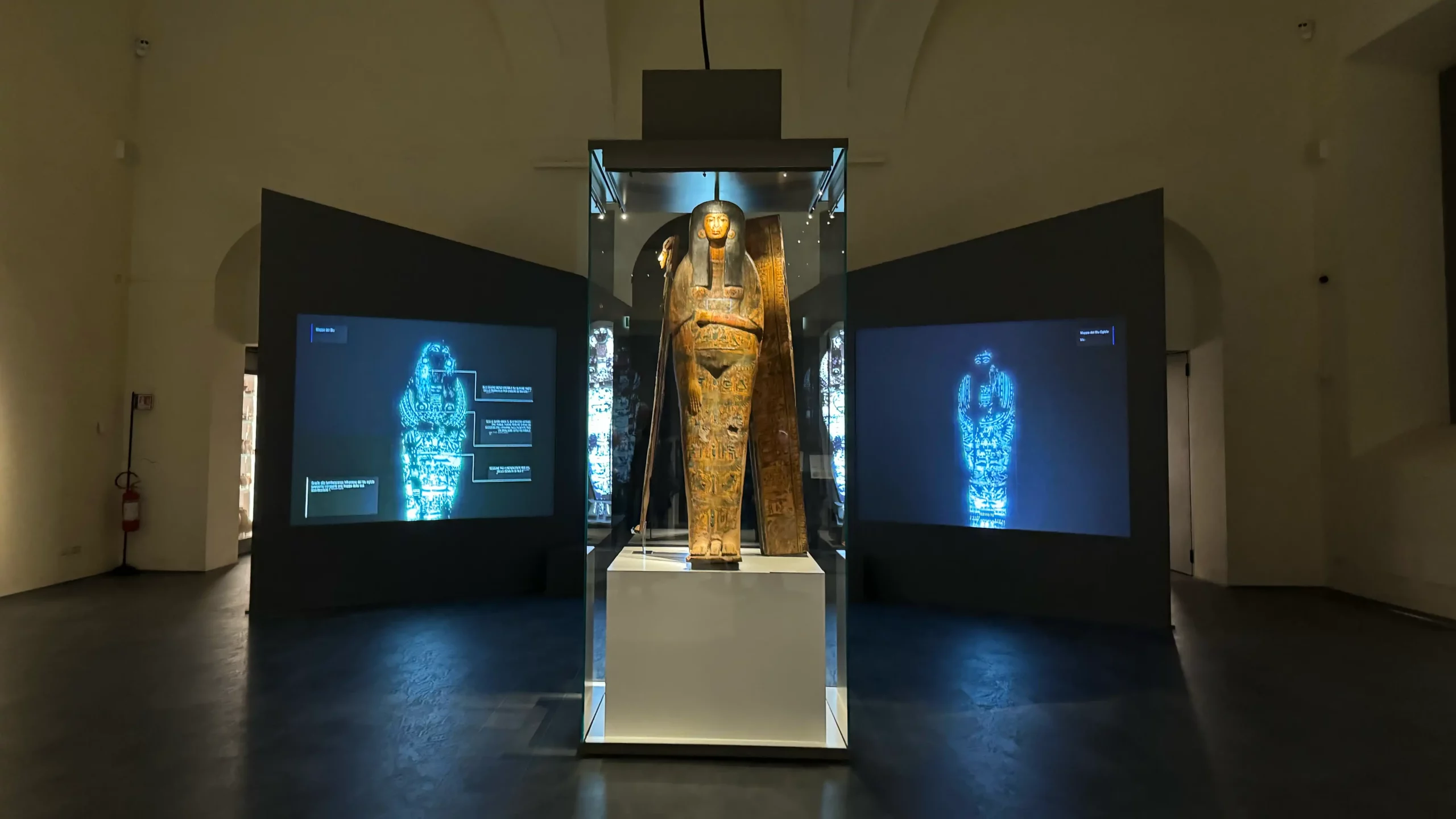SHIPWRECK OF THE SICILIAN CHANNEL
Digital memory of a tragedy: A collective remembrance project blending technology and humanity.
Client:
YEAR:
2024 - 2025
#realitycapture #blender #vrmodel #3dmodel
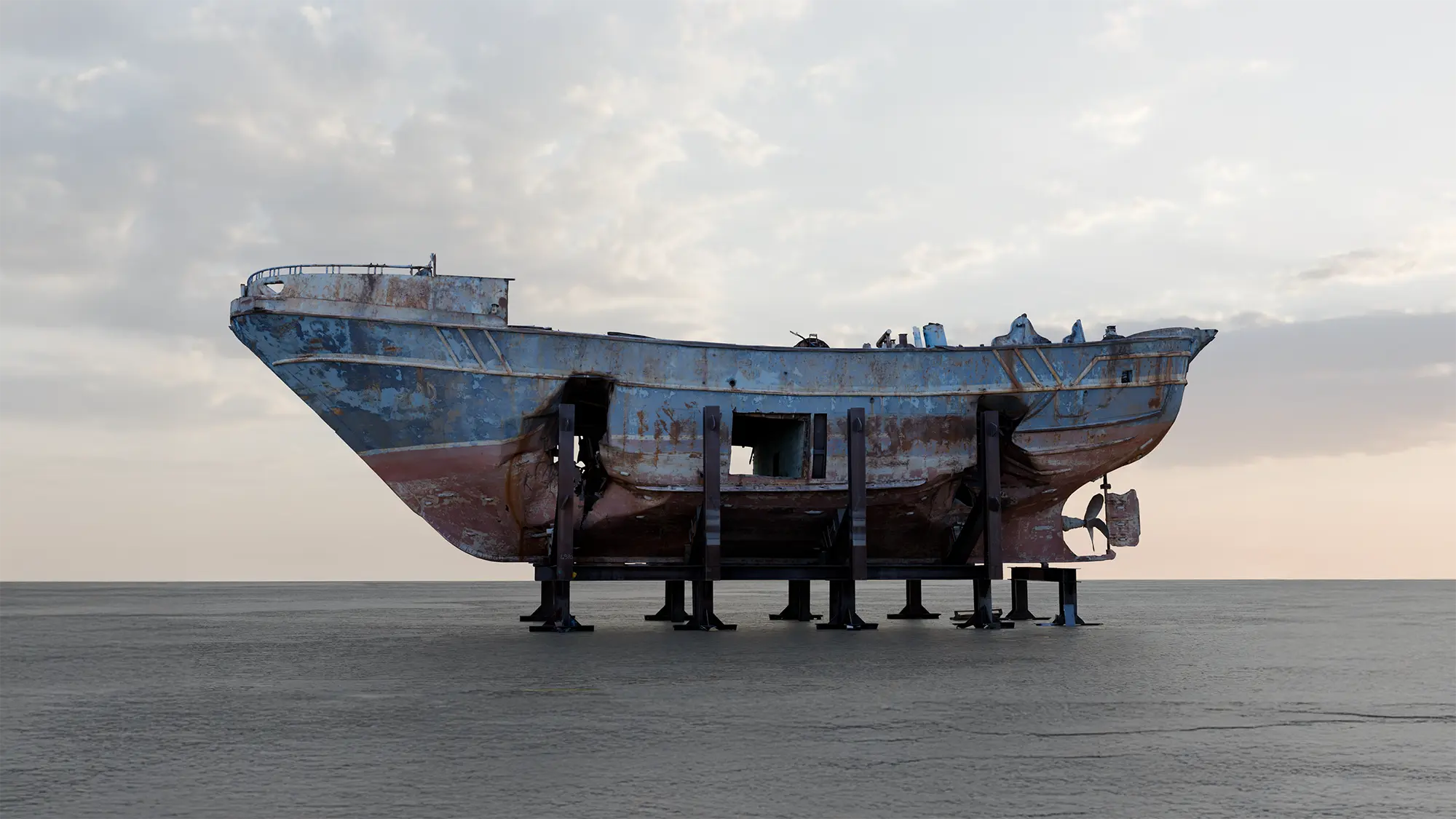
A VESSEL WITNESSING TIME
On April 18, 2015, one of the most dramatic maritime tragedies in contemporary history unfolded: the sinking of a boat in the Mediterranean, claiming the lives of over 1,200 migrants. This event stands not only as a human disaster but also as a symbol of the migration crises of our time.
The University of Milan entrusted us with the task of documenting and preserving the memory of this shipwreck through a unique project: the detailed 3D scanning of the vessel. This initiative, combining advanced technology with human sensitivity, aims to create an impactful interactive and visual testimony, bridging memory, education, and social reflection.
BETWEEN HISTORY AND TECHNOLOGY
The project focused on two primary objectives:
- Documenting the shipwreck in detail to provide a visual and historical record of this devastating event.
- Raising public awareness about the issue of migration through the use of interactive 3D models and an immersive reproduction of the scene.
To achieve these goals, a combination of high- and low-resolution models was developed, designed for use in educational, exhibition, and commemorative contexts.
OVERCOMING CHALLENGES
The project presented complex technical and operational challenges that required innovative solutions:
-
- Restricted Physical Access to the Wreck: Although data acquisition of the wreck’s interior spaces was necessary, the project mandate prohibited physical entry. To overcome this limitation, remote surveying methods were employed, utilizing technologies such as laser scanning and photogrammetry mounted on external supports to ensure comprehensive documentation without compromising safety.
- Managing Large Data Volumes: Acquiring over 2 terabytes of data demanded advanced hardware infrastructures and specialized software to manage and optimize data processing.
- Aligning Internal and External 3D Models: Integrating data collected from the exterior and interior of the wreck required sophisticated calibration and alignment algorithms to guarantee an accurate and faithful representation of reality.
- Creating Low-Poly Models: Optimizing models for interactive applications while preserving visual quality with ultra-high-resolution textures (16k) was essential. Balancing detail and performance was crucial to deliver a seamless, high-quality user experience.
SCANNING THE BILGE FLOOR
A significant challenge encountered during the project was the presence of water in the bilge floor, caused by the severe damage sustained by the boat. This condition made it impossible to directly scan the lowest parts of the wreck, compromising the completeness of the 3D model.
Solution Adopted
To address this issue, an in-depth analysis of all possible solutions was conducted, aiming for an effective yet non-invasive approach. Among the options considered, such as drilling holes in the hull to facilitate drainage, the team chose a method that ensured the utmost respect for the integrity of the wreck.
The final solution involved using a hydraulic pump provided by the fire brigade, which allowed the water in the bilge to be temporarily removed. This operation was carried out with great care to prevent further damage to the structure and preserve the wreck’s authenticity.
Once the water was drained, the bilge floor became accessible, enabling accurate scanning with the planned surveying tools.
Results
Thanks to this solution, the 3D model was completed, including areas initially deemed inaccessible. The combination of meticulous planning and technical intervention allowed the team to document every part of the wreck with precision while respecting the integrity of the artifact under study.
FINAL RESULTS
The outcome of this project was extraordinary, with a profound emotional and visual impact:
- High-resolution 3D models of the wreck, suitable for exhibitions and educational applications.
- A low-poly model optimized for interactive experiences, compatible with VR headsets and other digital platforms.
- A visual memorial, featuring stylized silhouettes placed where the victims were found. This transformed the model from a mere technical document into a humanitarian testimony, prompting reflection on the tragedy.
AN INTERACTIVE AND IMMERSIVE EXPERIENCE
To amplify the emotional impact, a VR experience was designed, allowing users to explore the wreck firsthand. Walking among the silhouettes, visitors can immerse themselves in the context of the tragedy, perceiving the harrowing atmosphere of the spaces and the sorrow of that story.
A UNIQUE PROJECT
What makes this project truly special is the fusion of advanced technologies with a strong humanitarian and social component. In a landscape where many projects are limited to technical documentation alone, our proposal aimed to spark a global reflection on the migration crisis, creating an educational and commemorative tool that goes far beyond simply recording the wreckage.
With this work, we have shown how technology can be used to preserve historical memory and promote deep reflection, highlighting the human dimension behind the numbers and statistics of global tragedies.


